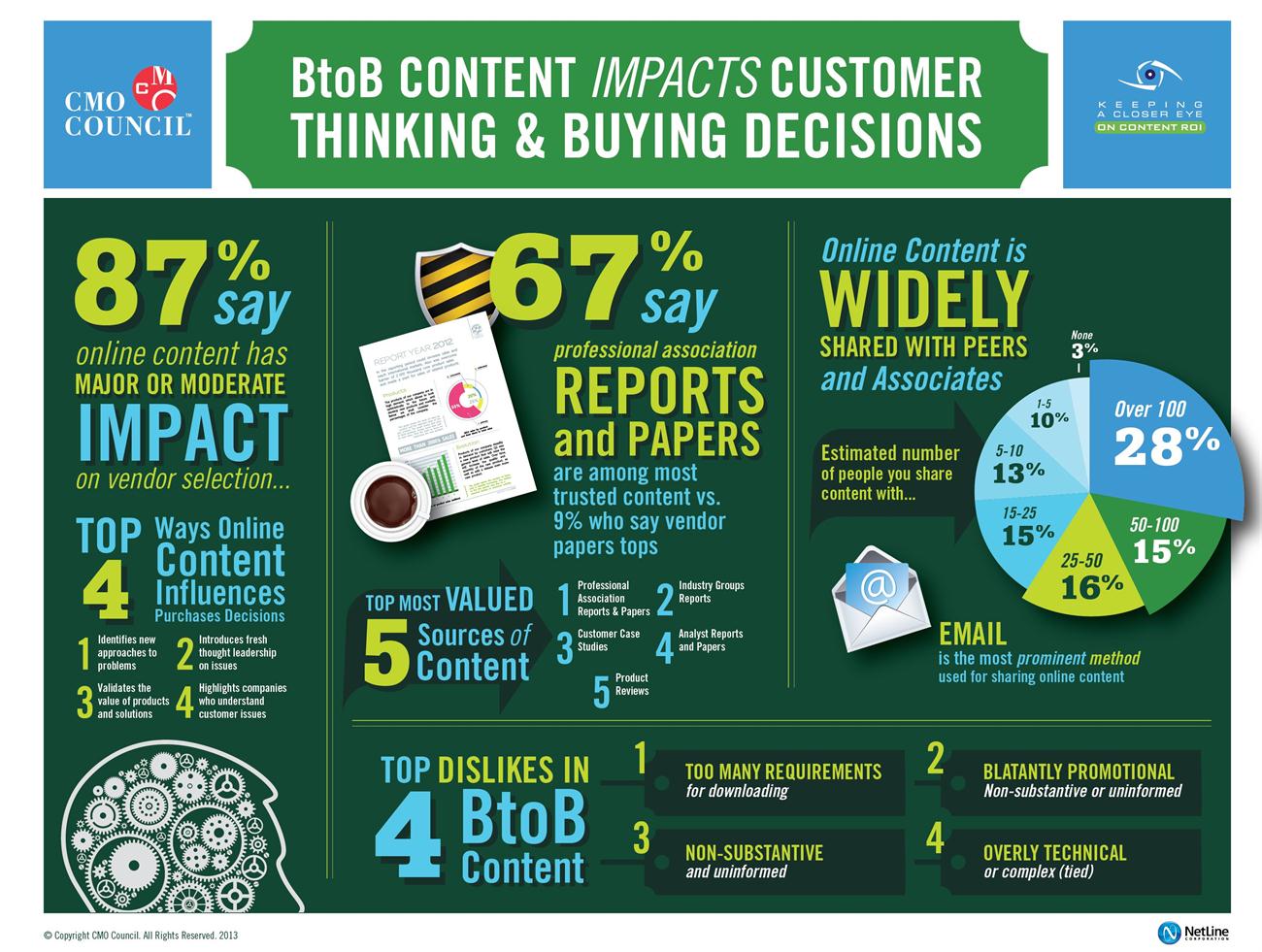6 Quality Content Myths
My EVG colleagues and I devote a lot of time and blog space to sharing our thoughts about the value of and need for quality content. This time out I thought it’d be helpful to dismiss a few quality content myths.
Myth 1: It’s about the products
This one’s a big pet peeve of my client-and-sometimes-colleague Jason McClain, who sent me this note recently: “You absolutely need some content/bullet points/spec sheets, etc. that cover product as a foundation, but most companies confuse that with content that’s going to draw visitors or increase customer loyalty.”
In other words, if all you can do is provide product specs and descriptions, if your brand doesn’t understand and can’t communicate how it makes the world a better, easier place for customers, then you’re fighting a losing battle.

Think of it as a re-imaging of the Communication Pyramid (English 101, anybody?): put the audience at the top, and your focus changes entirely. As Antony Young writes in his recent article for AdAge Digital, “To succeed, marketers need to develop content that consumers actually want to see in the context of the environment where they find it.”

Myth 2: It’s gotta lead to a transaction
Too many times, we see brands engage in email or social campaigns incorporating a landing page whose sole raison d’être is generating a transaction (be it a purchase form, RFQ or a “tell us more about you” page). Don’t get me wrong, here: transactions are terrific—they’re trackable and, in my business, they help demonstrate success. That said, there are other issues to consider.
If the content you’ve created is intended to result only in a transaction, then you’re going down a stinker of a path. These days, your brand needs to be hypersensitive about publishing something of value and providing it for <gulp!> free—no strings or cumbersome forms attached. This content sharing builds loyalty and, if you do it right, helps establish your credibility in terms of adding value to the user’s experience.
Need more empirical evidence? Check out this infographic recently shared by Marketingprofs.com’s Ayaz Nanji and produced by the CMO Council, which indicates that some 50% of surveyed B2B buyers are turned off if they have to jump through too many hoops to get to your content.

Lee Corso; ESPN Media Zone
Myth 3: It’s easy
Not so fast, my friend.
If quality content as a philosophy or a strategy were easy, there wouldn’t be a whole industry built around it. Your mother would do it for you.
The best creators of quality content, be they internal marketing teams or outsourced agencies, have monumental tasks in front of them because they have to know your widget inside and out: how it’s made, what materials comprise it, what its intended uses are, and what its capacity, capability and performance specs are. What’s more, these folks have to know more about your industry and customers than anybody else in your company.
Think about it, to produce really effective content for your brand, the team has to do its homework in a way your sales, design and engineering teams don’t. “Knowing a customer’s challenges better than them is hard and more work than just memorizing FFBs,” says McClain, “I know my product, but creating new content requires research and more knowledge about my industry than what’s talked about inside our walls.”
Myth 4: It’s cost prohibitive
This is my least favorite excuse because the flip side is this: it’s profit-prohibitive to continue rowing the boat the same, non-strategic way you’ve been doing it for the past XX years. Sooner or later, you’ll be either beached or swept away.
Successful marketing teams focus on creating content that engages, educates and inspires users, making it easier for a sales team to turn a prospect into a living, breathing customer. Sure, it may cost you a bit more to have relevant, high-quality, user-facing content created, but you’re better enabling your sales team at the same time, and that makes the content valuable.
In his June 2 blog post, B2B marketing specialist G. David Dodd talks about the direct impact your marketing efforts have on sales efforts, namely “nurturing potential buyers before passing those leads over to sales.” How do marketing teams nurture? Again, by producing content that demonstrates an understanding of the user’s need and offers something of value that makes his or her life easier.
Myth 5: Its impact is minimal
According to the CMO-generated infographic above, 87% of the polled B2B audience indicates that online content has at least a moderate impact in their purchase decisions. Before you start patting yourself on the back, remember that ½ of a purchase decision is the option NOT TO PURCHASE, then ask yourself: does my brand’s online content do one of these?
- Identify a new approach to an existing problem
- Introduce new ideas and philosophies on industry issues (thought leadership)
- Illustrate that my brand’s widgets are the solution for the consumer’s problem
- Demonstrate that my brand understands what the customer’s issues are
If the answer is yes, congratulations, your brand’s content has won its ZMOT and is positioned to make an impact. But if the answer is “no,” it’s time to reevaluate your content strategy so you can make that lasting impact.
Myth 6: It’s not shared
Another favorite in the EVG War Room. If your brand’s content isn’t being shared, you need to know why. Right now. As Autumn Nicholson highlighted in a blog post just last week, users share content that is valuable to them on a personal level, meaning the content is user-focused. Period.
Even the B2B crowd frequently shares online content—again, look back at CMO’s inforgraphic, and you’ll see that 43% percent of the B2B audience they polled shares content with 50 or more of their peers and associates.
If your brand’s content machine is generating copy for the sake of copy or posts for the sake of posts with no true intent to provide something of value, then welcome back to the stinky path mentioned earlier. In 5 Worst Things Companies Do on Facebook Today, Inc.com’s Carrie Kerpen colorfully depicts a few “posting personas” that are doomed to fail. Among my favorites:

- The Beggar – this is the poster who begs for likes and shares as if they result in some type of monetary value.
- The Stock Boy – this is the dude who posts stock images in lieu of his brand’s products and people in action.
- Mr. Inappropriate – this guy tries to capitalize on current news: “The Cubs just won 6 in a row, why not celebrate with an oil change at Blitz Lube?”
- The Cheeseball – this one posts pix of puppies and babies to generate likes even though he’s in the ball-peen hammer business (scary, I know).
The fact of the matter is—dead horse beating aside—if you produce content, social or otherwise, that is relevant to your audience and valuable to them, they’ll be more inclined to share it with like-minded folks who may also find it valuable.
And isn’t that what’s it all about: using content as tool that answers a user’s question or solves a user’s problem? It’s hard to do and may cost you more than an intern’s hourly wage, but if you do it right, you’ll benefit your customers, your sales team and, eventually, your brand.
Joseph Hall – VP, Content Marketing



